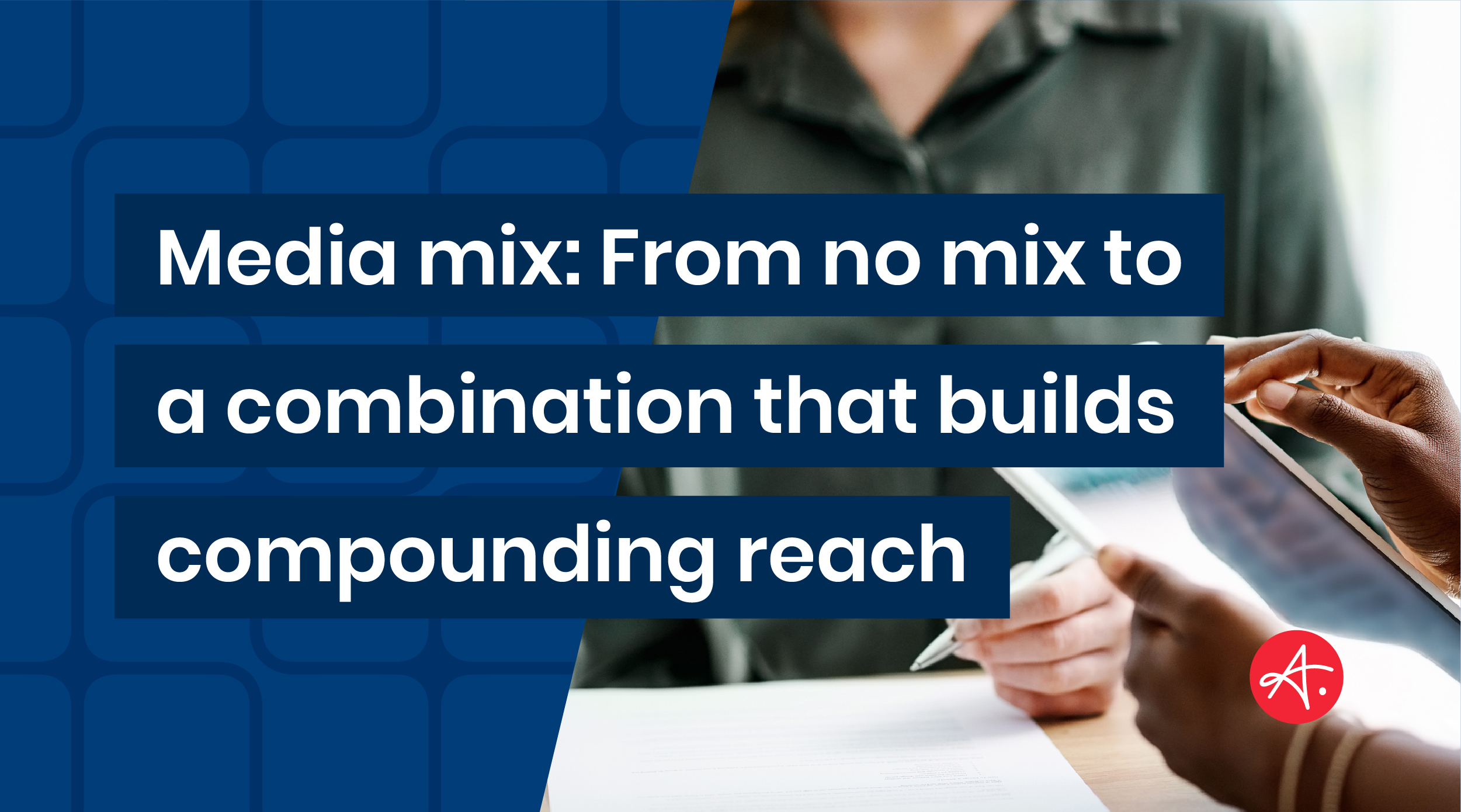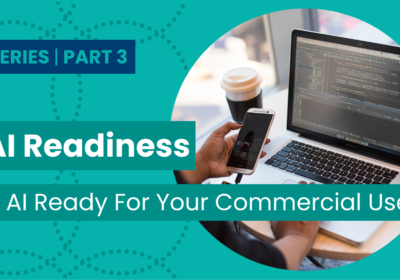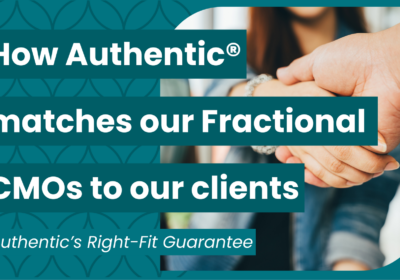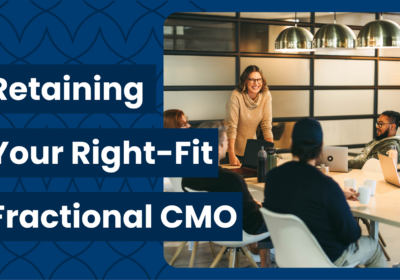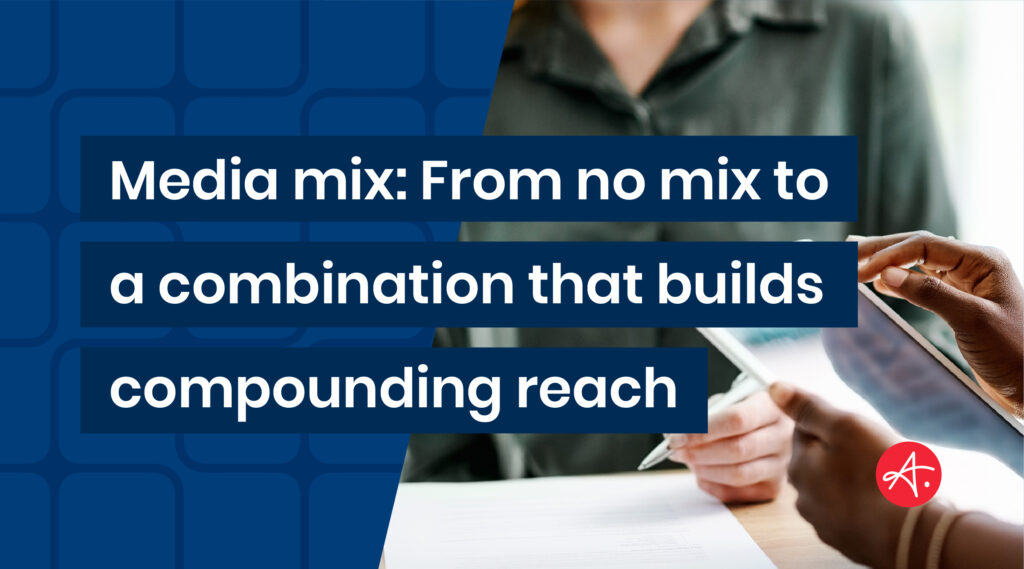
Four essential media categories
In the earliest days of a business, most founders see marketing as one big category. However, any marketing program can and should be understood in the context of these four mediums: paid, earned, shared, and owned. Separating marketing initiatives into these mediums helps companies visualize and assess their overall media mix — the combination of marketing activities a business uses to communicate its value, promote itself, and connect with its audiences.
When first getting started with marketing, businesses will typically invest heavily into one or two of these mediums. However, as they grow and mature, a more balanced mix becomes critical to ensure the brand shows across all relevant mediums and channels to reach and engage its audiences.
Using our Authentic Growth™ Marketing Maturity Matrix, we demonstrate the stages a business moves through as its approach to its media mix matures. The example we share in this post highlights a typical progression where the company first invests in owned media. However, the medium your business starts with will depend on your business type and customers. For example, a direct-to-consumer brand may begin by prioritizing paid media (e.g., digital advertising) to target a specific consumer segment with ads.
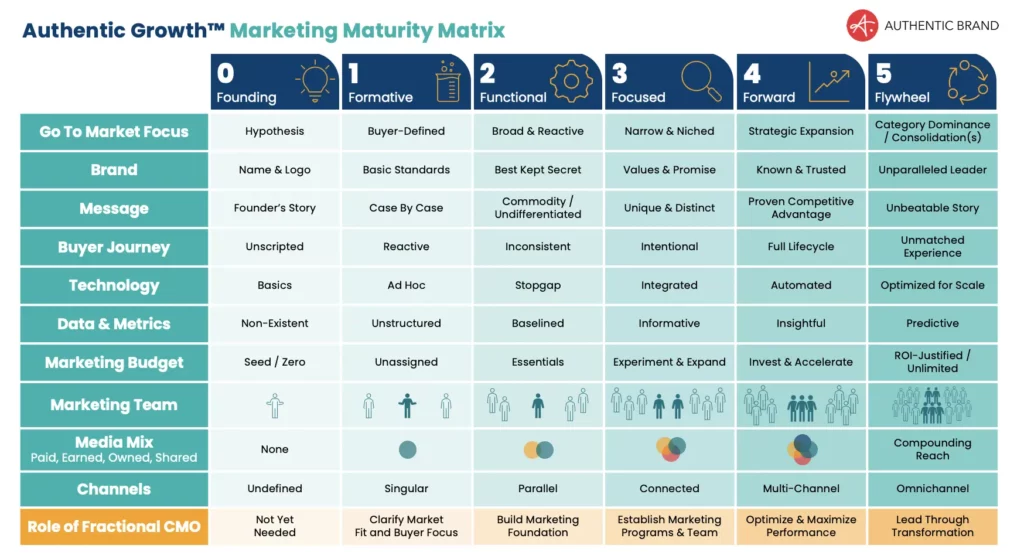
The path to compounding reach: Stages 0 to 5
The goal of every business is to show up confidently and strategically across all marketing mediums. The journey from a fledgling business with no media mix to one with the right combination of synchronized marketing activities requires experienced leadership, a holistic view of the marketing landscape, and a thoughtful progression.
The following six stages demonstrate how businesses typically mature their approach to their media mix.

Stage 0: Founding – None
Media mix isn’t a consideration in this initial stage because the business proposition isn’t fully formed yet. In this stage, the founders experiment with their solution, market fit, and brand story. They’re likely sharing the initial iterations of this story through their networks and organic connections. Before thinking about which marketing mediums to use, the business first needs a solid understanding of how it will position itself and who it will target.
How to mature to the next stage: Decide on an initial story you will share with your audiences. It won’t be fully baked or perfect, but you must start with something to start building your brand.
What you’ll need: A clarified brand position and message that you will tell the world and an understanding of who you will try to approach with that story.

Stage 1: Formative – Singular
In this stage, the founders and early employees need to be able to articulate the brand’s story over and over with prospects. Typically, to help you do this, the first step is to set up a basic website (an owned medium) to share who the company is and what solution(s) it provides. However, the initial website tends to be passive, acting more as a brochure to send to prospects and partners or legitimize the business if anyone stumbles upon it. You haven’t yet activated the website as a strategically owned channel.
How to mature to the next stage: Take a more intentional approach with your owned media — the mediums where you own the brand experience, including your website, emails, the events, webinars, podcasts you host, and the social channels you manage.
Ask yourself the following questions to understand how you can use your owned channels to engage your audiences on a more regular basis:
- Do you have the right tools to facilitate owned media? For example, is your website set up on a user-friendly content management system (CMS) that enables you to easily create content, like blogs and case studies?
- Which social platforms engage the right audience? Do you have social handles on those platforms? And do you have the capacity to maintain all of them?
- Do you have an email marketing capability, and if so, does it integrate with your CRM?
What you’ll need: The right owned technology to enable consistent engagement with prospects, partners, and customers.

Stage 2: Functional – Multi
In this stage, you’ve begun to create critical mass. You have multiple buyers, and you’ve started to establish an identity within your marketplace. This stage is when businesses often expand into their second medium: paid. You might get invited to sponsor an event, exhibit at a trade show, publish an advertisement in a trade journal, or decide it’s time to try digital advertising.
However, without an experienced marketing leader in place, there’s a good chance you’re 1) responding reactively to these paid opportunities and 2) haven’t considered how to strategically synchronize your owned and paid media efforts or measure ROI. Your efforts are reactive and experimental (what we call random acts of marketing), and you likely haven’t filtered them through a strategic lens. Frustration may be bubbling among leadership because you’re unable to understand the impact of your investments.
How to mature to the next stage: If you haven’t already, it’s time to bring in experienced marketing leadership to set up the tracking required to understand marketing performance, make data-driven decisions about where to direct your investments, and manage the resources you’ll need to execute strategic marketing programs.
What you’ll need: An experienced, strategic marketing leader and analytics technology that enables you to track and measure your marketing performance.

Stage 3: Focused – Integrated
At this stage, you have a marketing leader who understands how critical it is for the activities across each marketing medium to work together. Your owned media has likely become a more thoughtful conduit for ongoing content and brand-building. Your paid media activities (e.g., trade shows, advertising, and sponsorships) are likely driving engaged traffic back into your owned environments, and your business has become more intentional about earned media opportunities (e.g., awards, speaking opportunities, and media mentions).
However, these initiatives are still happening as one-offs, sometimes reactively, and often aren’t as strategically integrated as they could be through a more holistic campaign or overarching content strategy. There may not yet be a formal budget for PR or advertising. Instead, the company is taking advantage of opportunities as they pop up.
How to mature to the next stage: Your marketing leader needs time to build the proper foundation to support and integrate the cross-medium marketing activities and build internal alignment with executives and sales leadership. This foundation includes a marketing strategy, budget, a selection of activities that best support the strategy, and the right technology and campaign tracking to quickly understand what’s working and what isn’t.
Importantly, now is the time for the marketing leader to build a team that can execute high-quality programs that integrate across the four mediums. Typically this team will be a combination of internal leadership and staff and specialized external resources (e.g., agencies and freelancers).
What you’ll need: Decisions about what programs, activities, and technology to retire, what to add on, and the right people in the right seats to power your marketing engine. Alignment between sales leadership and marketing leadership to understand how the budget and program mix supports the overall strategy and how you might need to do things differently than you’ve done them in the past.

PESO model & relevant marketing activities within each medium. Source: Spin Sucks

Stage 4: Forward – Amplified
You now have a strategic marketing plan with a budget to support the technology, content creation, and people resources needed to execute your paid, earned, shared, and owned media activities. You have clarity on who your market is, their biggest pain points, and the mediums where they’re most likely to engage. Rather than creating new content for each medium, you’re getting smarter about having the mediums work together more efficiently.
This is often the stage at which your shared and earned media becomes more strategic. Previously, these opportunities were likely organic and ad hoc: someone shared your content on LinkedIn, or a few employees who were active advocates leveraged their personal social channels to champion your brand and relationships. But now is the time to be more intentional and strategic about shared and earned media opportunities because you better understand your audience and who they trust for information.
How to mature to the next stage: Think about influencer marketing. Who is influential in your ecosystem and has the trust and ear of your audience? Brainstorm ways to make it compelling and beneficial to these influencers to share your content with their audiences. At the same time, train your executives on social selling and think strategically about how your SMEs and thought leaders could be guest contributors or speakers through established media outlets (e.g., Fast Company or Forbes) or industry events.
What you’ll need: Marketing expertise that understands influencer marketing, social selling, and PR in your industry or with your buyer type and shared and earned media plans that align and support your marketing strategy. Executive understanding of and buy-in to the importance of amplifying your brand across shared and earned media.

Stage 5: Flywheel – Compounding Reach
With owned, paid, earned, and shared media all actively contributing to brand trust, engagement, and pipeline conversion, you’ve successfully built a brand magnet that works 24×7 to bring the right audiences into your orbit. You identify opportunities for efficiency and ways to better leverage your resources (people, time, and budget) as you consistently measure results at all levels: media mix, channel, campaign, and content. As you learn what works best, you can do more with less and free up resources for new initiatives.
How to continue maturing: Constant evolution of the media mix is essential as new technologies, tactics, and trends emerge. Continually evaluate efficiency and effectiveness to reinvest in the highest-performing areas and divest where you’re seeing a lack of performance. Stay on top of changing marketing dynamics. Your goal is to maintain a market-relevant, brand-aligned marketing engine that achieves flywheel outcomes: building upon its own success to achieve compounding results.
The path to compounding reach: Stages 0 to 5
The right media mix for a business changes as innovations or new market realities emerge. This is one of the most compelling reasons a fractional CMO is such a viable model for growing businesses. Rather than hiring a specialist resource for a marketing skill you need today, a fractional CMO brings a holistic view and understanding of all the opportunities across the various mediums and how and when to pull the levers to integrate those pieces as your business grows.
At Authentic, we help clients look forward 3-5 years to build the architecture, team, and partnerships they need to get them where they need to go. Reach out if you’d like to learn how an Authentic Fractional CMO™ could bring our proven methodology to your business to craft a media mix that generates compounding reach.


